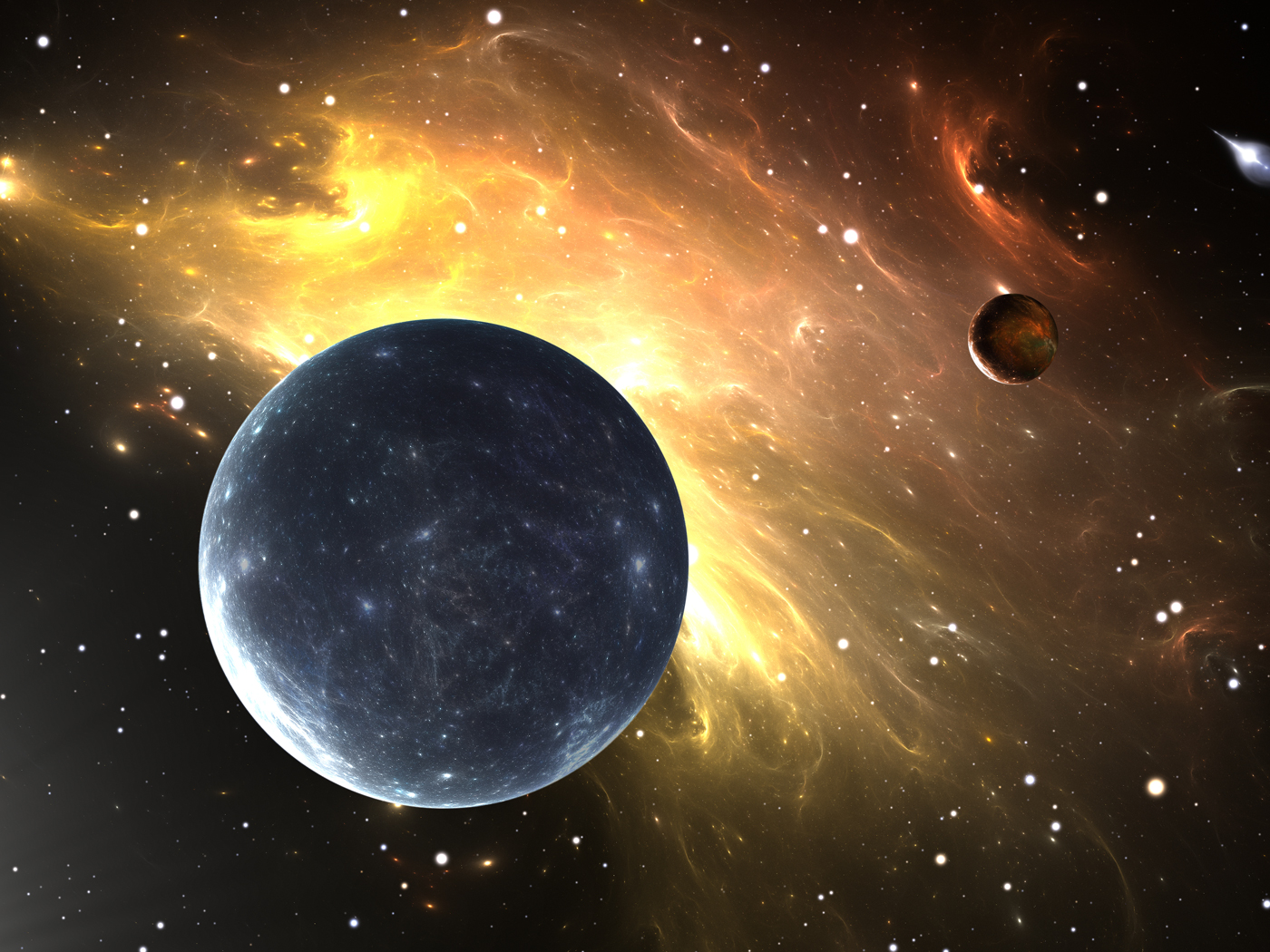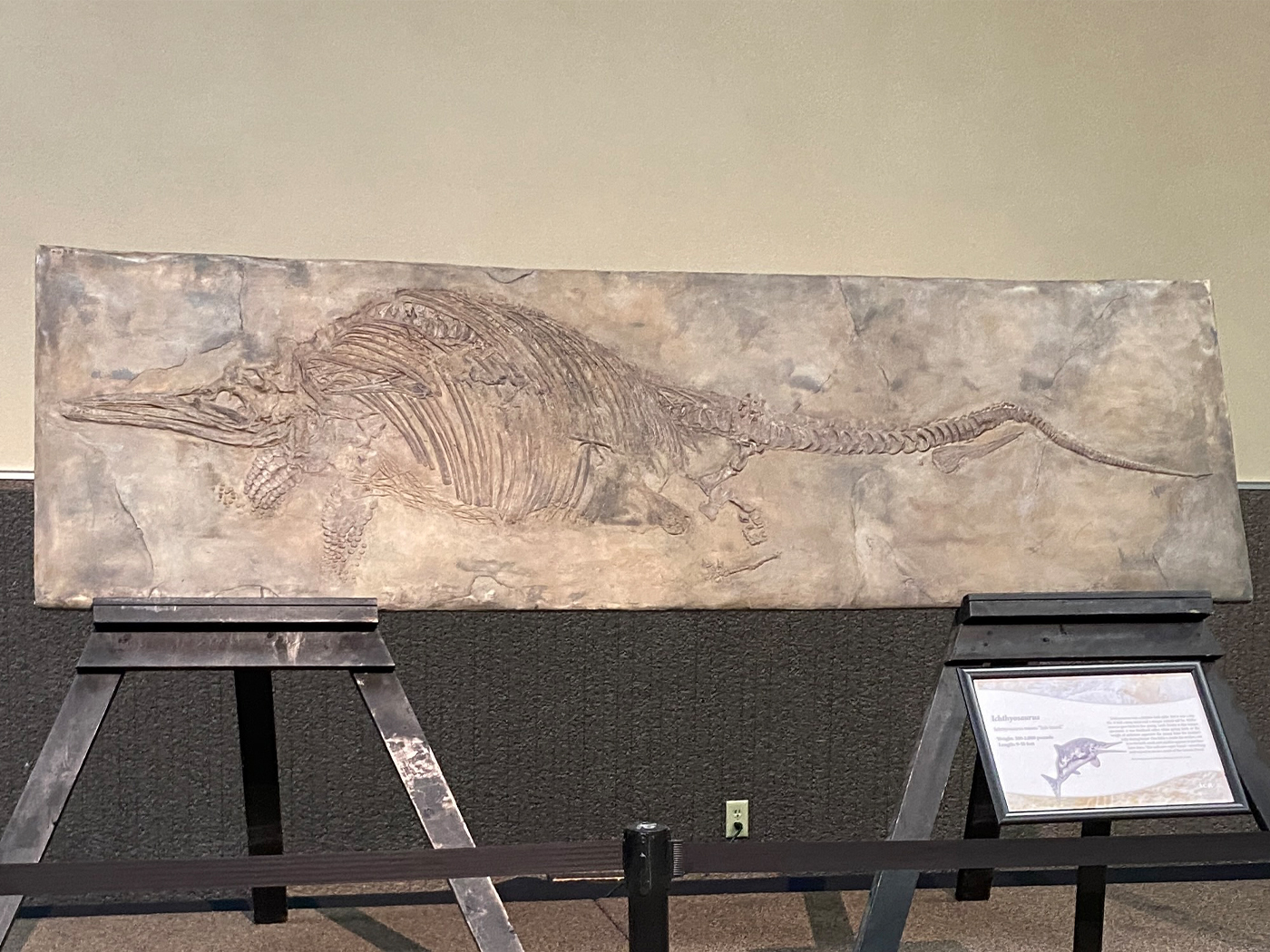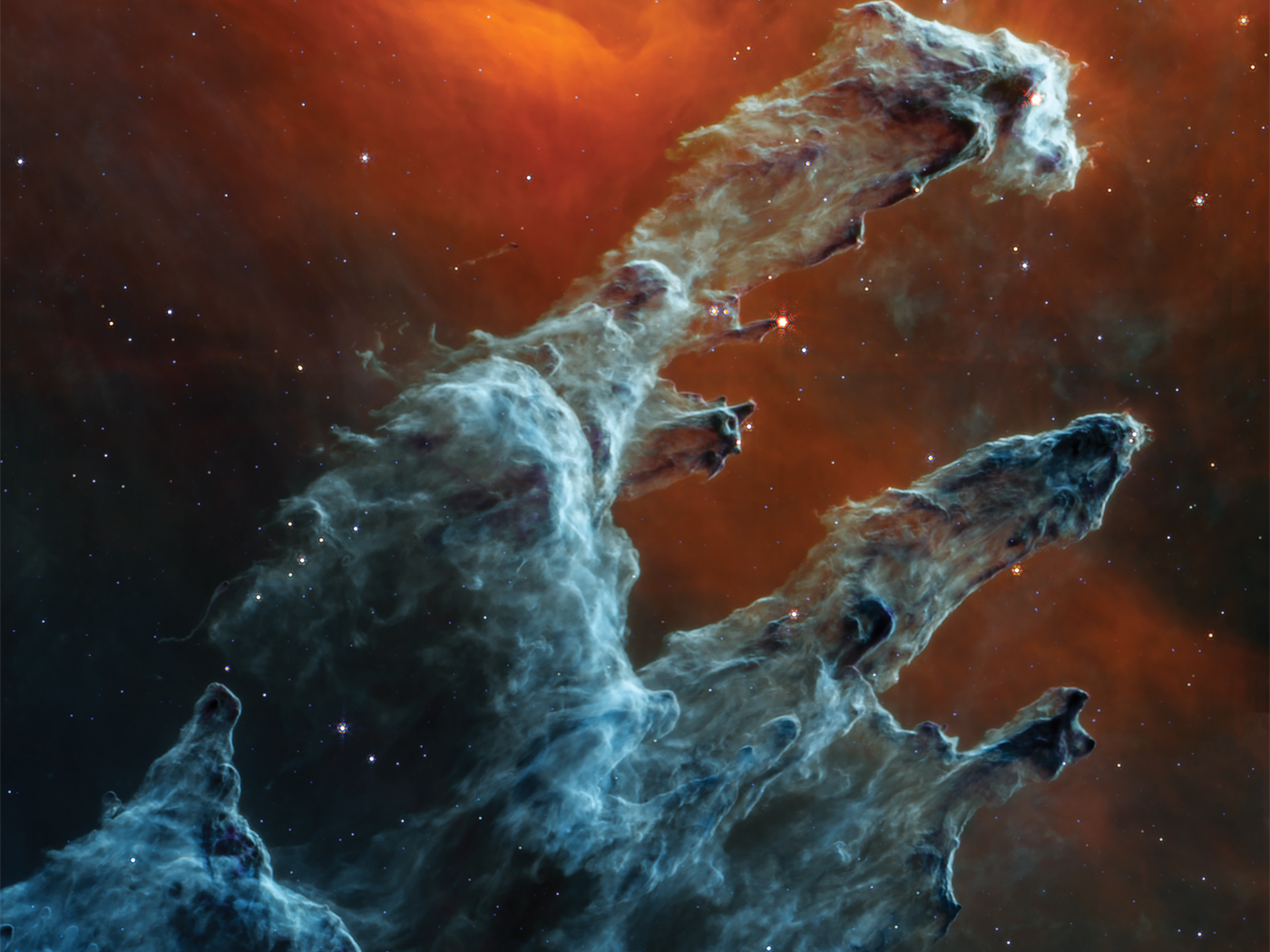The Problem
Light, traveling at 186,000 miles per second, will travel about 6 trillion miles in one year. This distance is called one light-year. There are galaxies that are alleged to be billions of light-years distant from us in space. This means that the light, which left the galaxies 5 billion years ago, should just now be reaching us. This would seem to indicate that the Universe and the creation must be at least 5 billion years old or else we wouldn't be seeing this light. In other words, if the stars were only 6 - 10,000 years old, the light from these distant galaxies would not have even reached us yet.
Four Possible Solutions
(1) Distances in space cannot be accurately measured. Obviously we cannot stretch a string into outer space or measure these distances with a yardstick, and so distances are calculated, rather than measured. This is accomplished by a technique known as triangulation, or parallax. Surveyors use this method using the laws of trigonometry which state that if the baseline and two angles of a triangle are known, then the height of that triangle can be calculated.
Short distances of a few hundred thousand miles can be measured by triangulating the simultaneous observations of observatories on opposite sides of the earth, but as the ratio of the unknown to the known distance increases, the baseline angles become greater and greater, so that beyond an altitude-to-baseline ratio of 28.5 to 1, the angle becomes greater than 89º and must be further divided into minutes and seconds of arc. The limitations of this method are evident even within our own solar system, as the apex angle to our sun would be only 10 seconds of arc (1/360 of a degree). The distances to even the nearest stars are so great that a greater triangulational baseline is needed, and so the earth's orbit around our sun is used, allowing a baseline of about 186 million miles. Sightings are taken 6 months apart, the angles are compared, and the distance is computed with trigonometry.
Because the distances to the stars are so great, the sides of the triangle are virtually perpendicular and so only the nearest stars (up to about 200 light-years) can be measured by this technique. For example, our sun is 8 light minutes from us, so the baseline of the triangle would be 16 light minutes. But our nearest star, Alpha Centauri, is 4 1/2 light-years or 2,365,000 light minutes from earth, for a ratio of approximately 148,000 to 1. At that ratio, an 8 1/2" line drawn across this page would have the apex of its triangle 20 miles away!
Greater distances are determined by the presumed sizes and intensity of stars, red shift, and many questionable factors which may have nothing whatever to do with distance. 1 In fact, some astronomers feel that it is possible that the entire universe could fit into an area within a 200 light-year radius from the earth! Therefore, there is no guarantee that the actual distances in space are as great as we have been told, and light from the farthest point in the universe could have reached us in only a few hundred years.
(2) Light may take a "shortcut" as it travels through space. This is difficult to illustrate, but suffice it to say that there are two concepts of the "shape" of outer space. One is that it is straight-line (Euclidean), and the other is that it is curved (Riemannian). Based on observations of 27 binary star systems, it appears that light in deep space travels in curved paths on Riemannian surfaces. 2
The formula for converting straight-line to curved space is:
![]()
where r is the Euclidean or straight-line distance, and R is the radius of curvature of Riemannian space. Using this formula, and a radius of curvature of 5 light-years for Riemannian space, the time for light to reach us from points in our own solar system is practically the same for either Euclidean or Riemannian distances, and there is not much of a change even out to the nearest star (4 1/2 light-years). But if we insert an infinite Euclidean distance for the farthest conceivable star, it would take only 15.71 years for light to reach us from that distance! The following table gives an idea of the distance-to-time conversions:
| Euclidean Distance in light years |
Riemannian Distance in Actual Time |
|
|---|---|---|
| 1 | .997 years | |
| 4 | 3.81 | |
| 30 | 12.5 | |
| 100 | 14.7 | |
| 1,000 | 15.6 | |
| 10,000 | 15.7 | |
| infinite | 15.71 |
Notice that, by the nature of the formula, the upper limit in time in Riemannian space has a definite limit, and even if the radius of curvature is modified by new discoveries, it will never get very large.
Conclusion: It appears that light may take a "shortcut" as it travels through deep space, and even if we grant that the uniformitarian distances are valid, the time for light to get here from the uttermost part of the universe would be only about 15 years.
(3) It is possible that the speed of light was considerably faster in the past.
There are different approaches to this theory. One suggestion is that the speed of light has been slowing consistently over the last 300 years, which extrapolates to a speed 5 x 1011 (500 billion) times faster 6000 years ago. 3 If this is true, light from a 5 billion light-year star (assuming the distances actually are that great) would have reached us in 3 days! Another suggestion is that the speed of light at the time of the Creation was infinite, and that a "shock wave" went out from the earth at the time of the Curse, slowing the speed of light down to its present value. 4 Light currently being emitted from these distant stars would take a long time to reach us, but at the time of the creation it would have arrived here almost instantaneously. Yet another suggestion is that the permittivity and permeability of free space changed at the time of the Flood, slowing the speed of light by a factor of 513 from its previous value. 5
Conclusion: Creationists differ on their interpretations of how, when, and by what factor the speed of light changed in the past, but there does seem to be some agreement that this is a real possibility. This third factor can either be used independently or in conjunction with the first two points. In other words, it may not only be that the distances are smaller than commonly claimed, but it may also be true at the same time that light travelled faster in the past and took a "shortcut" as well.
(4) There are Biblical indications that the earth and the universe were created with the appearance of age. There are several examples of this:
The plants (Gen. 1: 11-12)—They were created mature and bearing fruit at the moment of their creation. What would have taken years to accomplish by uniformitarian processes took place in seconds.
The animals (Gen. 1:20-25)—Fish, birds, and the three categories of land animals were created fully mature, having the appearance of age, and were immediately capable of reproduction on the first day of their existence (v. 22). The Bible therefore allows us to answer the otherwise-unanswerable question: "Which came first, the chicken or the egg?" Evolutionists would take the endless trail back to the first life forms, but the Creationist can say that the chicken was created first, and then laid its eggs.
Man (Gen. 2:7)—Adam was created as an adult, with an inherent storehouse of knowledge and vocabulary, and was capable of articulate speech and reproduction on the first day of his existence (Gen. 1:28-29; 2:8, 16-20, 24). Whether Adam gave the appearance of being 20 or 50 years of age is irrelevant—a person walking into Eden five minutes after Adam's creation would have been able to converse intelligently with him and would probably conclude, on uniformitarian assumptions, that Adam had been around for many years.
Eve (Gen. 2:21-23)—Likewise, Eve was created fully mature and ready for marriage to Adam immediately (Gen. 1:27-28; 2:22-25).
The stars (Gen. 1:14-19)—The sun, moon, and stars were created on the fourth day of the creation week. Individually and collectively they were to have different functions: dividing the day from the night, serving as navigational aids, as chronological indicators, for illuminating the earth, as well as for declaring the glory of God (Psalm 19:1). What is not often noticed is that "it was so" on the very day of their creation (Gen. 1:15). Granted, the Biblical word "star" (Heb: kokab; Gr: aster) is a broader term than our English usage of "star" as an energy source, and includes just about anything in space, but the point is that the stars—and the nearest is 4 1/2 light-years distant—were seen on the first day of their existence. This means that even if the distances are correct, the stars would merely have given the appearance of having been here longer. Therefore, the stars and the light beams connecting them visually to the Earth were both created at the same time.
This concept raises several questions. First, does this not mean that God—like some magician—is intentionally deceiving us by making things appear to be older than they actually are? The question really goes back to the matter of intent: did God intend to fool us, or did He intend primarily to make things fully functional but we are fooled only because we view them with certain uniformitarian assumptions? Therefore, while it is true that the earth and the universe were created with the appearance of age, I think we do better to speak of the creation of a fully functional universe that, as a secondary feature, merely gives the appearance of age.
There are two red herrings that are usually drawn across the trail at this point of the discussion: "Were the trees created with rings?" and, "Did Adam have a navel?" First, the question about the tree rings depends partially on the purpose for which God originally intended the tree rings. We have observed this phenomenon and have noticed a correlation between the number of rings and the age of the tree, but chronology may be a secondary function of the rings, as indicated by certain trees that grow several rings in one year, or none at all, depending on weather conditions. Another possibility here is that God could have accelerated natural processes, so that He did in seconds what would normally have taken years to accomplish. Whether the trees had rings or not, the fact should not be overlooked that they were indeed mature and bearing fruit before the day was over (Gen. 1:11-12).
Now, did Adam have a navel? Probably not, simply because the navel is a remnant of the normal birth process, and not of maturity or functionality. Therefore, for God to have created him with one would indeed be deception, because it would convey misleading information.
The Biblical concept of a fully-functional creation of materials that give the appearance of age can be extended as well to the New Testament. The creation of wine in John 2:1-10 is one example. The fact that the water was not created ex nihilo, but was already in existence is beside the point. Wine is chemically greater than water, and so it does involve a certain amount of ex nihilo creation, and furthermore it gave the appearance of having been aged (John 2:8-10). So it is with the creation of the bread and the fish in John 6:1-13. Normally, bread and fish are the end result of a long growth process before they are finally prepared for consumption. The bread and the fish were created with the appearance of maturity, not because Jesus was doing parlor magic and trying to deceive His audience, but because He wanted the materials to be functional and immediately usable.
Conclusion
There are three "secular" or non-Biblical possibilities to the problem of harmonizing a young universe with the allegedly-great distances of the outer galaxies: (1) the distances may not be that great after all; (2) light may take a "shortcut" as it travels through deep space; (3) the speed of light may have been considerably faster in the past. These three are not mutually exclusive, and may in fact be used in conjunction with each other. The fourth solution, which may be used independently or in conjunction with the above three, is that God created the light beams as well as the stars so that they could be—as indeed they were—seen on the fourth day of the creation week.
References
l. Many astronomical assumptions are like a house of cards. For example, Hubble's constant, a mainstay in uniformitarian distance calculations, has recently been determined to be considerably different than previously thought, thus resulting in the overnight "collapse" of the size of the universe to 50% of its former value.
2. Harold S. Slusher, "Travelling of Light in Space," in Age of the Cosmos (San Diego: ICR, 1980), pp. 25-37. For an additional view on the hyperbolic or non-Euclidean geometry of space, see Wayne M. Zage, "The Geometry of Binocular Visual Space," Mathematics Magazine 53 (Nov. 1980), pp. 289-293.
3. Barry Setterfield, "The Velocity of Light and the Age of the Universe," Ex Nihilo 1 (1982): 52-93.
4. David M. Harris, "A Solution to Seeing Stars," Creation Research Society Quarterly, 15 (Sep. 1978): 112-115. He also offers an explanation for red-shift that does not require an expanding universe.
5. Gletin R. Morton, "Electromagnetics and the Appearance of Age," Creation Research Society Quarterly 18 (Mar. 1982): 227-232.
* Richard Niessen is Associate Professor of Bible & Apologetics at Christian Heritage College, El Cajon, CA 92021.













